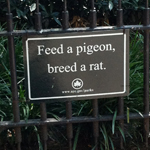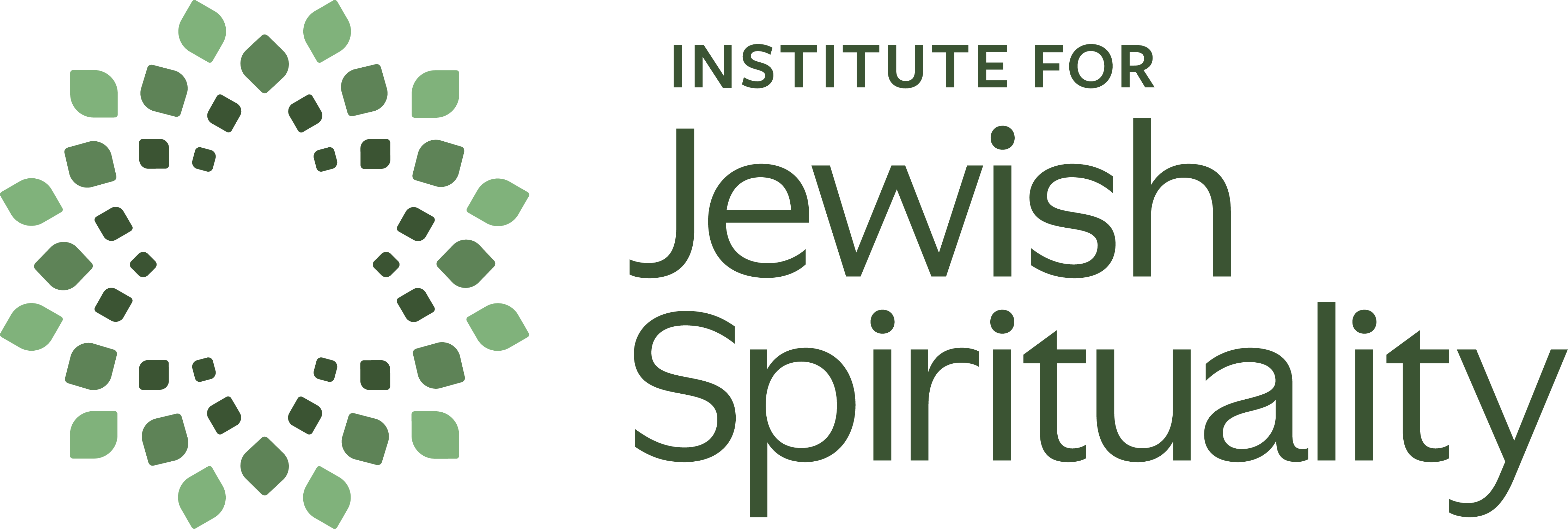Sep 14, 2012 | by Rabbi Lisa Goldstein, Former Executive Director, Institute for Jewish Spirituality
Elul is coming to an end with the grandeur and mystery of the High Holy Days about to begin. In New York the weather shifted this week too; the sun is still warm, but the wind is fresh and even chilly, signs of colder days approaching.
Last week I mentioned the new building that is being constructed outside our windows. I have been watching the workers, climbing, moving and hammering, seemingly without a care, on the drop-off edge of a concrete slab 20 stories above the street. As I write, one man in a neon green vest is clinging to the outside of a plywood ladder, nothing underneath him but a net two floors below, whacking at something with a tool. He is clipped on with a harness, but from here, it looks pretty terrifying.
Fear. I remember studying once with Gabe Goldman, a naturalist and Jewish educator. He told of having led a hands-on workshop about how to handle very, very sharp knives, so sharp that you wouldn’t even feel it if you cut off your finger. He taught his students how to hold them, work with them, and respect them. He then followed the workshop with a lesson about yirah, “fearing” or being “in awe” of God.
After the sweet, mellow days of Elul, these High Holy Days, Days of Awe, give us a glimpse of something stronger and a little more fearful. They encourage us to consider the mystery of the unknown days ahead, days that may hold great blessings and great suffering, and probably a little of both. They give us the forum to come face to face with our limits and the reality of our mortality. They challenge us to confront our own vulnerability in the face of the colder days that are coming.
But, like the men outside who are building a new building, a structure that will provide shelter for hundreds of people and stand witness to their labors for many years, the High Holy Days also give us the opportunity to take satisfaction in the work of our hands and to find joy in living this life, in company with fellow travelers, step by dangerous step, even when we feel we are dangling over the abyss.
May 5773 bring all of us more blessings than suffering, more expansiveness than constriction, more peace than conflict, and more joy than sorrow. May our practices give us tools for wisdom, gratitude and compassion. And may we find good companions (or a good Companion) for the journey who can support us with courage, love and guidance.

Aug 29, 2012 | by Rabbi Lisa Goldstein, Former Executive Director, Institute for Jewish Spirituality

Earlier in the summer, I went to Roosevelt Island. There is a red tram that takes you from the east side of Manhattan, up, over the Queensboro Bridge and the East River and then down to the island. It’s great fun.
I was early to meet my friend and so I waited at the tram depot on the Manhattan side for a while. The little plaza by the station was one of those strange places that for some reason attracts pigeons by the hundreds. My eye was caught by a sign that the New York City Department of Parks and Recreation posted on a fence: “Feed a Pigeon. Breed a Rat.” (And just for the record, I did indeed spy a rat, roughly the size of a pigeon, scurrying beneath the rose bushes.)
The sign reminded me of a classic teaching story that I first heard from Sheila Weinberg. A Native American elder is teaching a group of children, sitting at his feet. He says, “There are two wolves. One is filled with rage and hatred and blame and fear. The other is filled with compassion and forgiveness and peacefulness and faith. These two wolves are fighting. And they are inside me.”
One of the children asks anxiously, “Which wolf will win?”
The elder solemnly replies, “Whichever one I feed.”
In my experience, my more negative thought patterns are very similar to feeding rats and pigeons. I have no desire to feed the rats. But pigeons are innocuous. I find them  dirty and slightly menacing in a weird way, but they’re certainly not on the same level as rats. In the same way, I don’t intend to hold on to things that make me angry, hateful, fearful or judgmental. But I certainly can find myself nursing small grudges or injustices that seem innocuous.
dirty and slightly menacing in a weird way, but they’re certainly not on the same level as rats. In the same way, I don’t intend to hold on to things that make me angry, hateful, fearful or judgmental. But I certainly can find myself nursing small grudges or injustices that seem innocuous.
But in fact, they are not. The New York City Department of Parks and Recreation is exactly right. Feed a pigeon, breed a rat. Cling to that grievance and it inadvertently may shape my thoughts towards something much darker and unwanted.
Of course, there is a place in the world for all kinds of animals, even those we call pests, and anger, fear and hatred are unavoidable – and occasionally even useful – human experiences. It’s a question of appropriateness and discernment. Perhaps the first place we can stop “feeding the pigeons” is with ourselves – by bringing compassion, forgiveness and faith to our mind’s endless capacity for holding on when we might let go.



